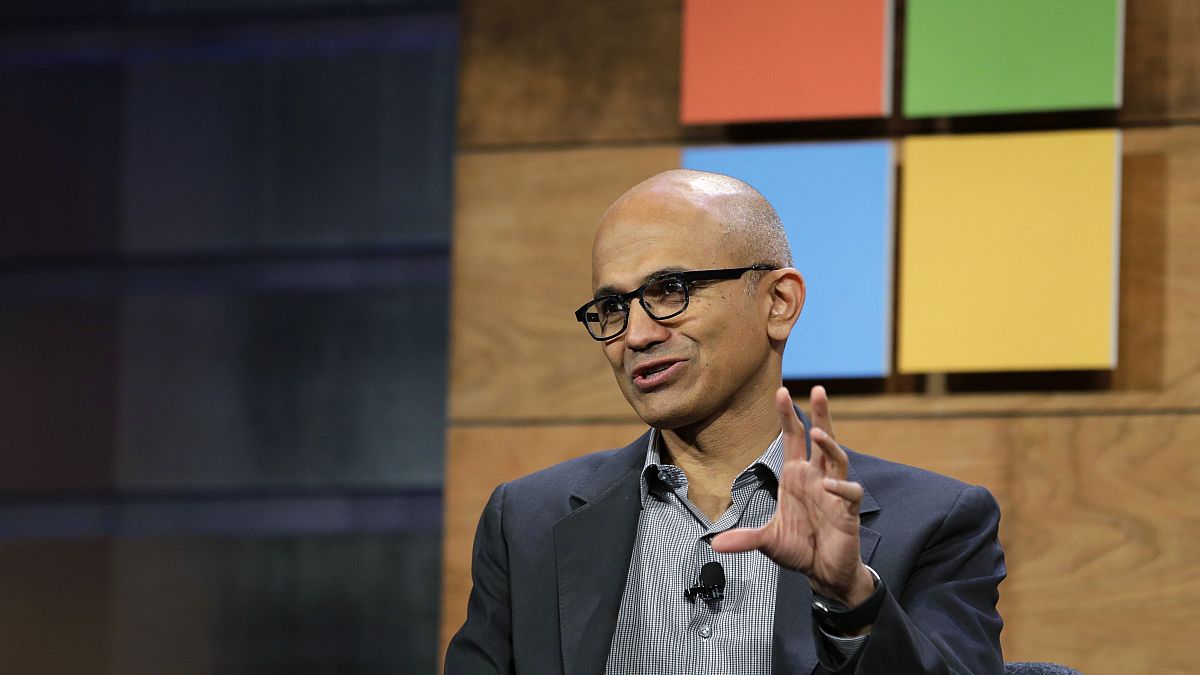Microsoft is set to release its quarterly earnings this week, shedding light on the trajectory of the artificial intelligence industry. Euronews Business highlights the key metrics that investors should focus on.
Microsoft will report its first-quarter earnings for the fiscal year 2025 after the US markets close on 30 October. The artificial intelligence (AI) pioneer launched ChatGPT in early 2023, sparking a global race in Large Language Model (LLM)-powered generative AI. Since then, its tech rivals—Alphabet and Amazon—have intensified competition in AI-supported cloud services.
Microsoft stands as the third-largest company in the world, with a market valuation of $3.18 trillion (€2.94 trillion), behind Apple and Nvidia. Its shares are up 15% year-to-date, underperforming most tech giants due to disappointing earnings in the June quarter as its cloud growth slowed.
In the upcoming earnings report, investors will closely monitor Microsoft’s growth in Azure cloud services, which is the core segment helping the tech giant compete with its rivals. The second key focus will be its spending on data centre construction, as rising costs could squeeze profit margins.
Key metric: Azure Cloud
Microsoft’s Azure and other cloud services segment accounts for nearly 60% of the company’s total revenue, making it critical to Microsoft’s growth. Azure ranks second globally in market share, behind Amazon Web Services (AWS) and followed by Google Cloud. Investors view this segment as central to Microsoft’s competitiveness.
In the fourth quarter of the fiscal year 2024, its Intelligent Cloud segment reported revenue of $28.51 billion (€26.37 billion), an increase of 19% year-on-year, driven by a 29% growth in Azure and other cloud services. However, Azure’s growth fell short of analysts’ expectations in that quarter, as the pace slowed from the low-to-mid 30% range seen in previous quarters.
According to FactSet, revenue for the Intelligent Cloud segment is expected to reach $26.8 billion (€24.78 billion) in the September quarter, up 10% from a year earlier, indicating a further slowdown. Some analysts expect Azure and other cloud services to grow by low-to-mid 30%, marking a slight sequential increase from the July quarter. However, the company may need to deliver a significant earnings surprise in this segment to justify its rising investment in AI infrastructure.
Additionally, analysts anticipate Microsoft will report earnings per share of $3.1 (€2.9) on overall revenue of $64.57 billion (€59.71 billion), reflecting annual growth of 3.7% and 14% respectively. The projected figures also suggest a slight slowdown in overall revenue growth, down from 15% in the July quarter.
AI spending expected to continue increasing
Microsoft has previously noted that it is facing capacity challenges. CFO Amy Hood mentioned that the company has increased investment in data centre infrastructure to meet the fast-growing demand for AI training. In the forward-looking statements of the June quarter, the tech giant acknowledged “significant investments in products and services that may not achieve expected returns,” as capital expenditure surged to $19 billion (€17.5 billion) from $16 billion in the March quarter.
CEO Satya Nadella remarked, “As a platform company, we are focused on meeting the mission-critical needs of our customers across our at-scale platforms today, while also ensuring we lead the AI era.”
Microsoft 365 Copilot
A highlight of Microsoft’s upcoming earnings report could be updates on its Copilot autonomous agent, an AI-powered assistant that users can build in Copilot Studios. It “understands the nature of your work and acts on your behalf,” according to Microsoft, as revealed during an AI Tour in London earlier this month.
The AI agents can either simply respond to questions or be fully autonomous in managing business processes. The company has announced that a public preview of this new feature will be available in November. It will also introduce 10 new autonomous agents for business processes, such as sales, service, finance, and supply chain, with previews expected later this year or early next year.

